Reovirus-mediated induction of ADAR1 (p150) minimally alters RNA editing patterns in discrete brain regions
- PMID: 24906008
- PMCID: PMC4134954
- DOI: 10.1016/j.mcn.2014.06.001
Reovirus-mediated induction of ADAR1 (p150) minimally alters RNA editing patterns in discrete brain regions
Abstract
Transcripts encoding ADAR1, a double-stranded, RNA-specific adenosine deaminase involved in the adenosine-to-inosine (A-to-I) editing of mammalian RNAs, can be alternatively spliced to produce an interferon-inducible protein isoform (p150) that is up-regulated in both cell culture and in vivo model systems in response to pathogen or interferon stimulation. In contrast to other tissues, p150 is expressed at extremely low levels in the brain and it is unclear what role, if any, this isoform may play in the innate immune response of the central nervous system (CNS) or whether the extent of editing for RNA substrates critical for CNS function is affected by its induction. To investigate the expression of ADAR1 isoforms in response to viral infection and subsequent alterations in A-to-I editing profiles for endogenous ADAR targets, we used a neurotropic strain of reovirus to infect neonatal mice and quantify A-to-I editing in discrete brain regions using a multiplexed, high-throughput sequencing strategy. While intracranial injection of reovirus resulted in a widespread increase in the expression of ADAR1 (p150) in multiple brain regions and peripheral organs, significant changes in site-specific A-to-I conversion were quite limited, suggesting that steady-state levels of p150 expression are not a primary determinant for modulating the extent of editing for numerous ADAR targets in vivo.
Keywords: Cerebellum; Frontal cortex; High-throughput sequencing; Hippocampus; Interferon.
Copyright © 2014 Elsevier Inc. All rights reserved.
Figures


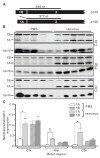
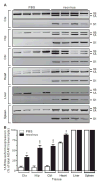
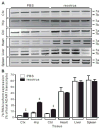


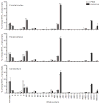
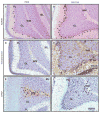
Similar articles
-
RNA editing at a limited number of sites is sufficient to prevent MDA5 activation in the mouse brain.PLoS Genet. 2021 May 13;17(5):e1009516. doi: 10.1371/journal.pgen.1009516. eCollection 2021 May. PLoS Genet. 2021. PMID: 33983932 Free PMC article.
-
RNA-Editing Enzyme ADAR1 p150 Isoform Is Critical for Germinal Center B Cell Response.J Immunol. 2022 Sep 15;209(6):1071-1082. doi: 10.4049/jimmunol.2200149. Epub 2022 Aug 17. J Immunol. 2022. PMID: 35977796
-
The RNA-editing enzyme ADAR1: a regulatory hub that tunes multiple dsRNA-sensing pathways.Int Immunol. 2023 Mar 14;35(3):123-133. doi: 10.1093/intimm/dxac056. Int Immunol. 2023. PMID: 36469491
-
Deciphering the Biological Significance of ADAR1-Z-RNA Interactions.Int J Mol Sci. 2021 Oct 23;22(21):11435. doi: 10.3390/ijms222111435. Int J Mol Sci. 2021. PMID: 34768866 Free PMC article. Review.
-
An RNA editor, adenosine deaminase acting on double-stranded RNA (ADAR1).J Interferon Cytokine Res. 2014 Jun;34(6):437-46. doi: 10.1089/jir.2014.0001. J Interferon Cytokine Res. 2014. PMID: 24905200 Free PMC article. Review.
Cited by
-
Regulation of RNA editing by intracellular acidification.Nucleic Acids Res. 2021 Apr 19;49(7):4020-4036. doi: 10.1093/nar/gkab157. Nucleic Acids Res. 2021. PMID: 33721028 Free PMC article.
-
Quantitative Analysis of Adenosine-to-Inosine RNA Editing.Methods Mol Biol. 2021;2181:97-111. doi: 10.1007/978-1-0716-0787-9_7. Methods Mol Biol. 2021. PMID: 32729077 Free PMC article.
-
Mutations underlying Episodic Ataxia type-1 antagonize Kv1.1 RNA editing.Sci Rep. 2017 Feb 20;7:41095. doi: 10.1038/srep41095. Sci Rep. 2017. PMID: 28216637 Free PMC article.
-
Understanding RNA modifications: the promises and technological bottlenecks of the 'epitranscriptome'.Open Biol. 2017 May;7(5):170077. doi: 10.1098/rsob.170077. Open Biol. 2017. PMID: 28566301 Free PMC article. Review.
-
Regulatory factors governing adenosine-to-inosine (A-to-I) RNA editing.Biosci Rep. 2015 Mar 31;35(2):e00182. doi: 10.1042/BSR20140190. Biosci Rep. 2015. PMID: 25662729 Free PMC article. Review.
References
-
- Athanasiadis A. Zalpha-domains: at the intersection between RNA editing and innate immunity. Semin Cell Dev Biol. 2012;23:275–280. - PubMed
Publication types
MeSH terms
Substances
Grants and funding
LinkOut - more resources
Full Text Sources
Other Literature Sources
Molecular Biology Databases
Research Materials

